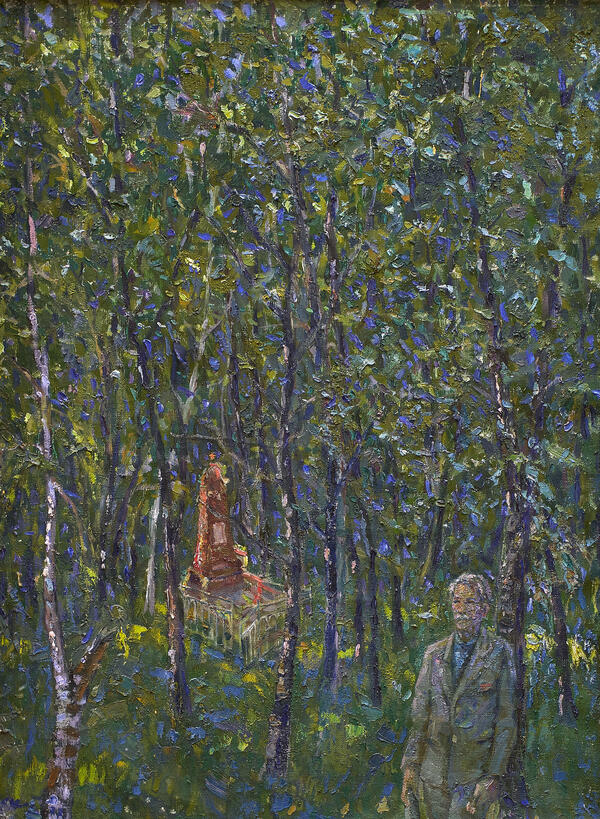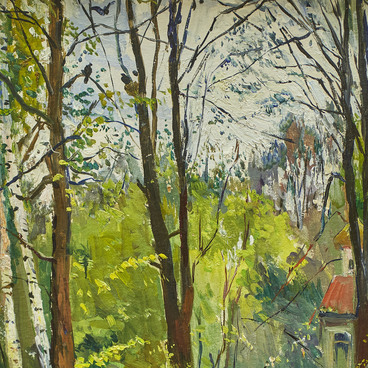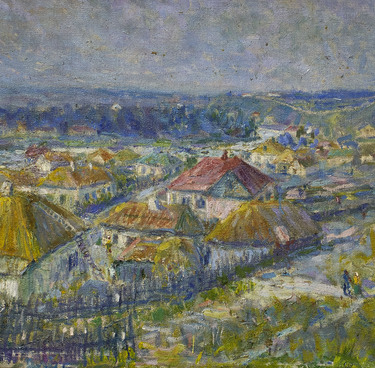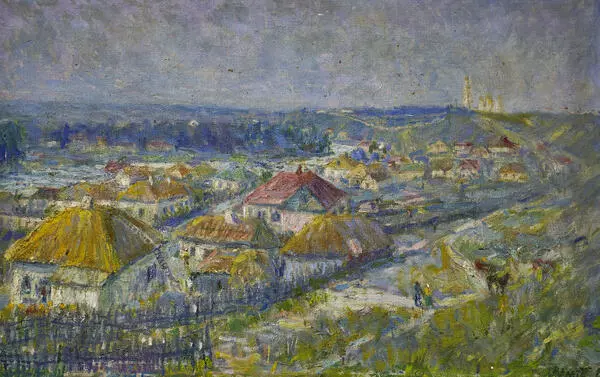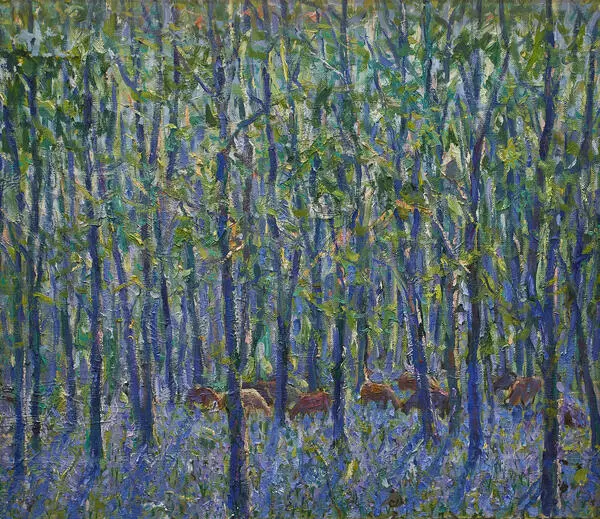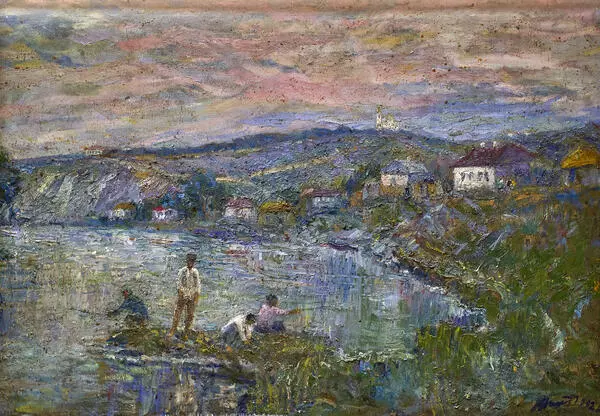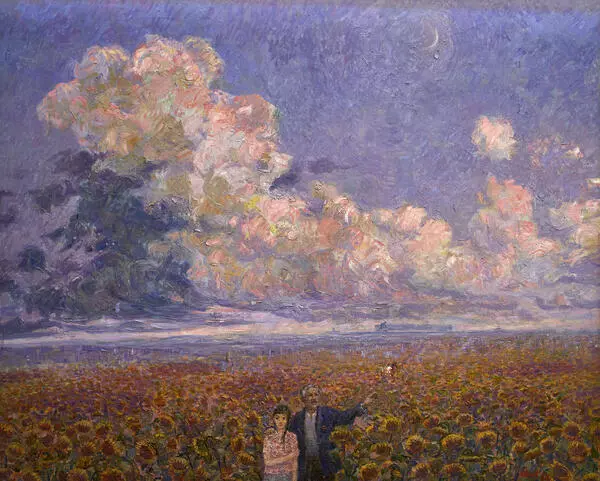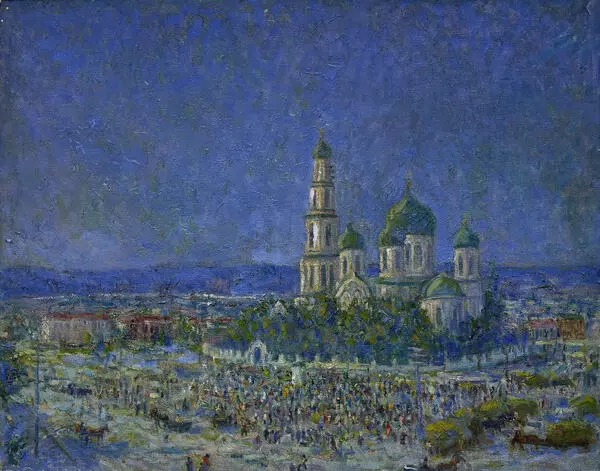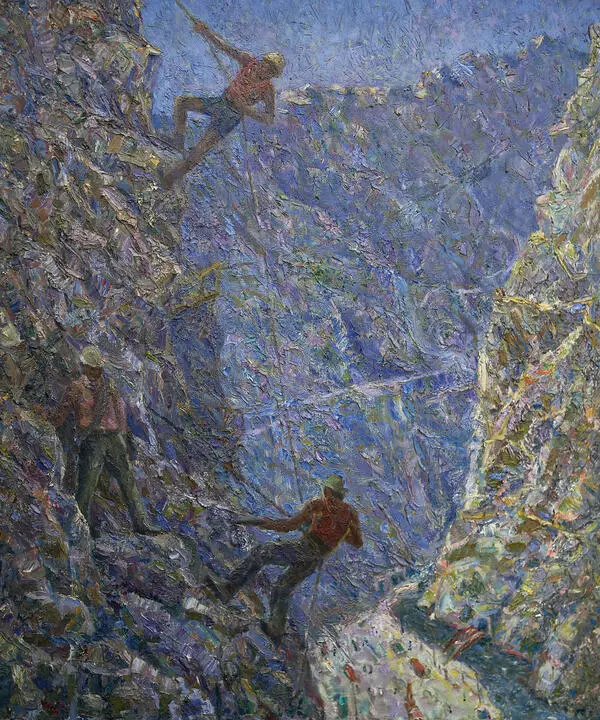‘She was shot by the Gestapo’ from the collection of the Valuy Museum of History and Art was created by Alexander Ignatiev, People’s Artist of Kyrgyzstan, laureate of the State Prize of the Kyrgyz SSR named after Toktogul. His works are in 14 museums in Russia and former Soviet republics, including the State Tretyakov gallery.
The future artist was born to the family of an artisan roofer in Valuyki, Belgorod region. In 1924, he graduated from the Valuy school and then worked in the local theater. After graduating from the Voronezh Art and pedagogical Technical School, Ignatiev was assigned to Kyrgyzstan.
In 1934, the Union of Artists of Kyrgyzstan was established, where Ignatiev was appointed Deputy Chairman. In the same year, he participated in the First Republican exhibition of artists. In the monograph “Fine art of the Kyrgyz SSR” for 1967, they noted: “He [Ignatiev] is one of those Russian artists who played a significant role in the formation of fine art in Kyrgyzstan.”
Alexander Ignatiev is one of the brightest representatives of artists in the USSR. On his canvases, he created hundreds of images dedicated to the nature and people of Kyrgyzstan: “Moonlight evening, ” “Spring in the Tien Shan mountains, ” “Mountaineers, ” “Bridges hanging over Narym, ” “Conquered mountains.” In his painting, Ignatiev simultaneously developed themes of Kyrgyzstan and Russia. Each of them found new figurative embodiments in the process of the artist’s spiritual and professional development.
Ignatiev also gave a lot of effort to social activities and worked with young artists. Since 1955, he worked as a member Of the Board of the Union of artists of the Kyrgyz SSR and a member of the State Expert Commission under the Ministry of Culture of the Republic. On his initiative, Alexander Ignatiev organized the People’s Museum of Fine Arts (a branch of the Belgorod State Art Museum) in his native city of Valuyki, which is now known as the Valuy Museum of History and Art. He donated dozens of his paintings to the museum’s holdings and attracted colleagues from Kyrgyzstan, Tajikistan, the Baltic States, and Moscow to form a meeting.
On the canvas, ‘She was shot by the Gestapo, ’ the artist depicted his brother Sergei Ignatiev. He stands next to the grave of Elena Makhortova, a Valuy resident, who was shot by the Nazis during the occupation of Valuyki for the fact that she helped the guerrillas. After this work, Ignatiev created several more canvases included in the theme of the Great Patriotic War.
Elena Makhortova worked as a teacher. Her tragic story is known to many in the town and district. Makhortova was born on May 21, 1912, in the village of Astakhovo, Pogrebetskaya volost, Valuy Uezd, Voronezh province. On the eve of the Great Patriotic War, Makhortova became a member of the Communist Party and an active employee of the Agitation and Propaganda Department of the All-Union Communist Party of Bolsheviks. When hostilities began, Makhortova voluntarily decided to become a fighter of the invisible front. She still was a teacher, but at the same time worked in intelligence for the Soviet Army.
In September 1942, a couple of months after the beginning of the occupation of the area, Elena Makhortova was arrested and sent to the Valuy prison. One of the residents of Urazovo village reported on it.
The future artist was born to the family of an artisan roofer in Valuyki, Belgorod region. In 1924, he graduated from the Valuy school and then worked in the local theater. After graduating from the Voronezh Art and pedagogical Technical School, Ignatiev was assigned to Kyrgyzstan.
In 1934, the Union of Artists of Kyrgyzstan was established, where Ignatiev was appointed Deputy Chairman. In the same year, he participated in the First Republican exhibition of artists. In the monograph “Fine art of the Kyrgyz SSR” for 1967, they noted: “He [Ignatiev] is one of those Russian artists who played a significant role in the formation of fine art in Kyrgyzstan.”
Alexander Ignatiev is one of the brightest representatives of artists in the USSR. On his canvases, he created hundreds of images dedicated to the nature and people of Kyrgyzstan: “Moonlight evening, ” “Spring in the Tien Shan mountains, ” “Mountaineers, ” “Bridges hanging over Narym, ” “Conquered mountains.” In his painting, Ignatiev simultaneously developed themes of Kyrgyzstan and Russia. Each of them found new figurative embodiments in the process of the artist’s spiritual and professional development.
Ignatiev also gave a lot of effort to social activities and worked with young artists. Since 1955, he worked as a member Of the Board of the Union of artists of the Kyrgyz SSR and a member of the State Expert Commission under the Ministry of Culture of the Republic. On his initiative, Alexander Ignatiev organized the People’s Museum of Fine Arts (a branch of the Belgorod State Art Museum) in his native city of Valuyki, which is now known as the Valuy Museum of History and Art. He donated dozens of his paintings to the museum’s holdings and attracted colleagues from Kyrgyzstan, Tajikistan, the Baltic States, and Moscow to form a meeting.
On the canvas, ‘She was shot by the Gestapo, ’ the artist depicted his brother Sergei Ignatiev. He stands next to the grave of Elena Makhortova, a Valuy resident, who was shot by the Nazis during the occupation of Valuyki for the fact that she helped the guerrillas. After this work, Ignatiev created several more canvases included in the theme of the Great Patriotic War.
Elena Makhortova worked as a teacher. Her tragic story is known to many in the town and district. Makhortova was born on May 21, 1912, in the village of Astakhovo, Pogrebetskaya volost, Valuy Uezd, Voronezh province. On the eve of the Great Patriotic War, Makhortova became a member of the Communist Party and an active employee of the Agitation and Propaganda Department of the All-Union Communist Party of Bolsheviks. When hostilities began, Makhortova voluntarily decided to become a fighter of the invisible front. She still was a teacher, but at the same time worked in intelligence for the Soviet Army.
In September 1942, a couple of months after the beginning of the occupation of the area, Elena Makhortova was arrested and sent to the Valuy prison. One of the residents of Urazovo village reported on it.
Makhortova was tortured to obtain information about intelligence work, partisans, and underground fighters. The German occupiers shot prisoners from time to time. At the end of October 1942, in the forest North of Valuyok, where the Nazis usually executed patriots, they also killed Elena Makhortova.

